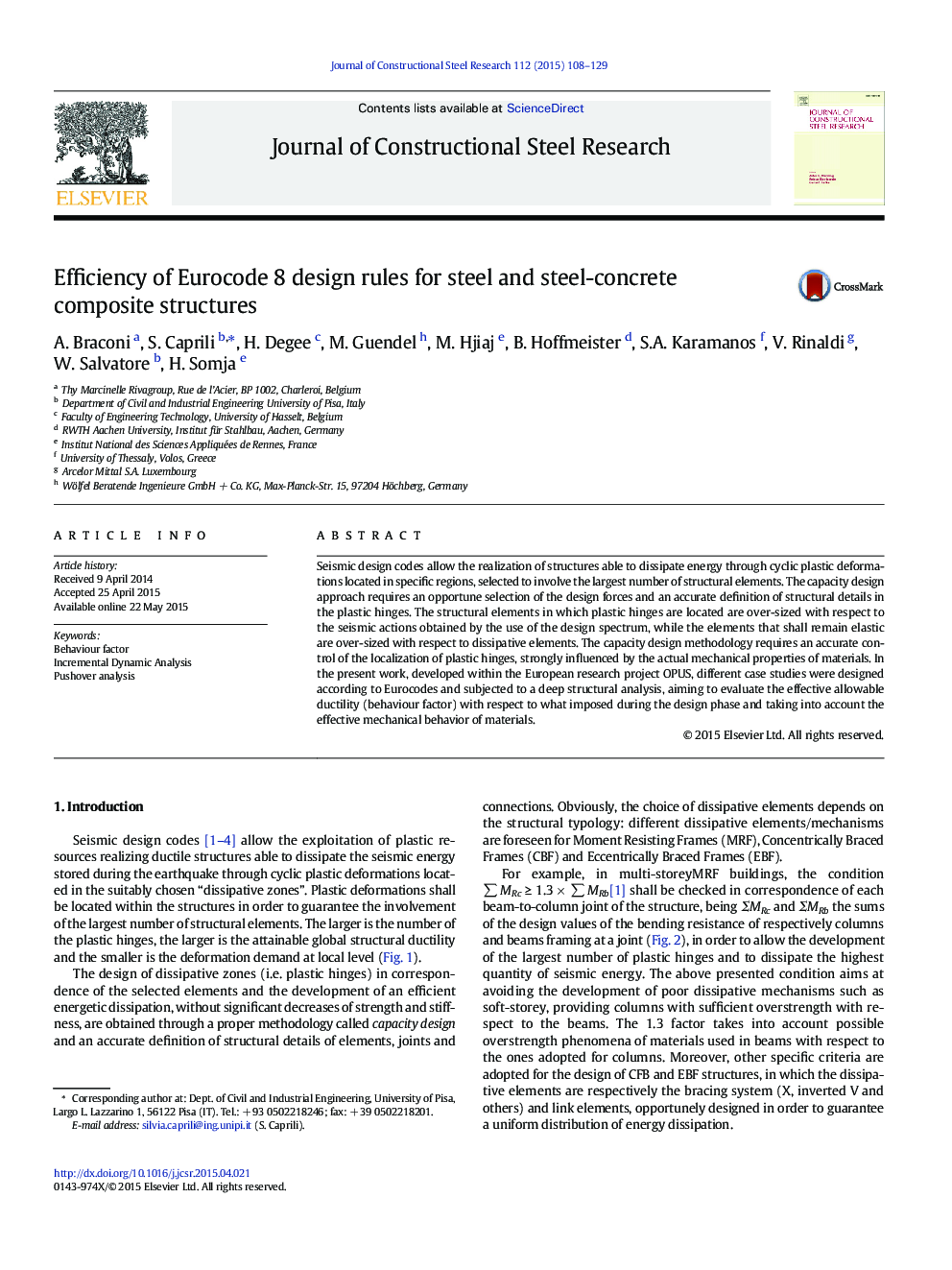| Article ID | Journal | Published Year | Pages | File Type |
|---|---|---|---|---|
| 284355 | Journal of Constructional Steel Research | 2015 | 22 Pages |
•Evaluation of behaviour factors for different structural typologies.•Application of capacity design approach for MRF, CBF, EBF steel and composite structures.•Strategies for the non linear modelling of different structural typologies.•Evaluation of the non linear behaviour of MRF, CBF, EBF and collapse modalities•Influence of material properties on the structural behaviour of steel and composite structures.
Seismic design codes allow the realization of structures able to dissipate energy through cyclic plastic deformations located in specific regions, selected to involve the largest number of structural elements. The capacity design approach requires an opportune selection of the design forces and an accurate definition of structural details in the plastic hinges. The structural elements in which plastic hinges are located are over-sized with respect to the seismic actions obtained by the use of the design spectrum, while the elements that shall remain elastic are over-sized with respect to dissipative elements. The capacity design methodology requires an accurate control of the localization of plastic hinges, strongly influenced by the actual mechanical properties of materials. In the present work, developed within the European research project OPUS, different case studies were designed according to Eurocodes and subjected to a deep structural analysis, aiming to evaluate the effective allowable ductility (behaviour factor) with respect to what imposed during the design phase and taking into account the effective mechanical behavior of materials.
